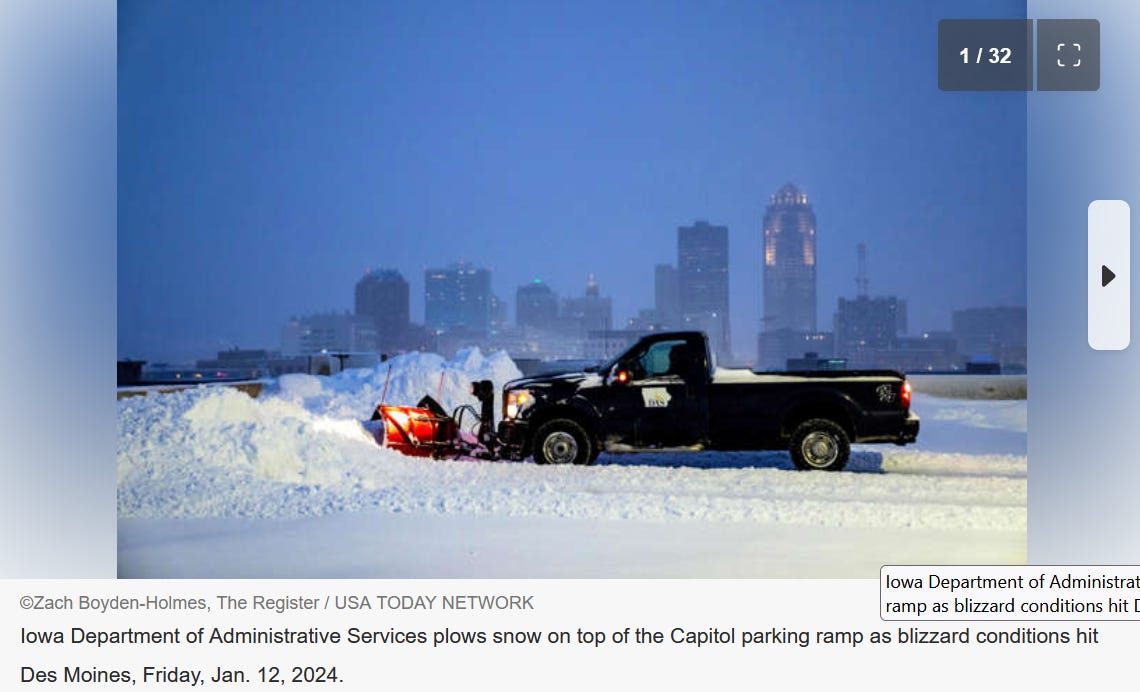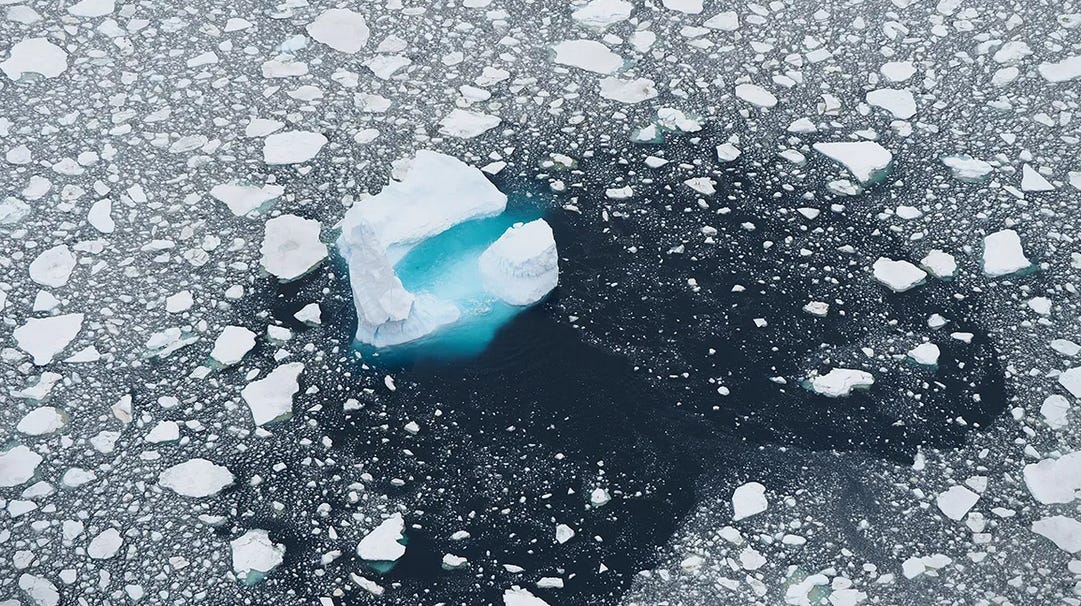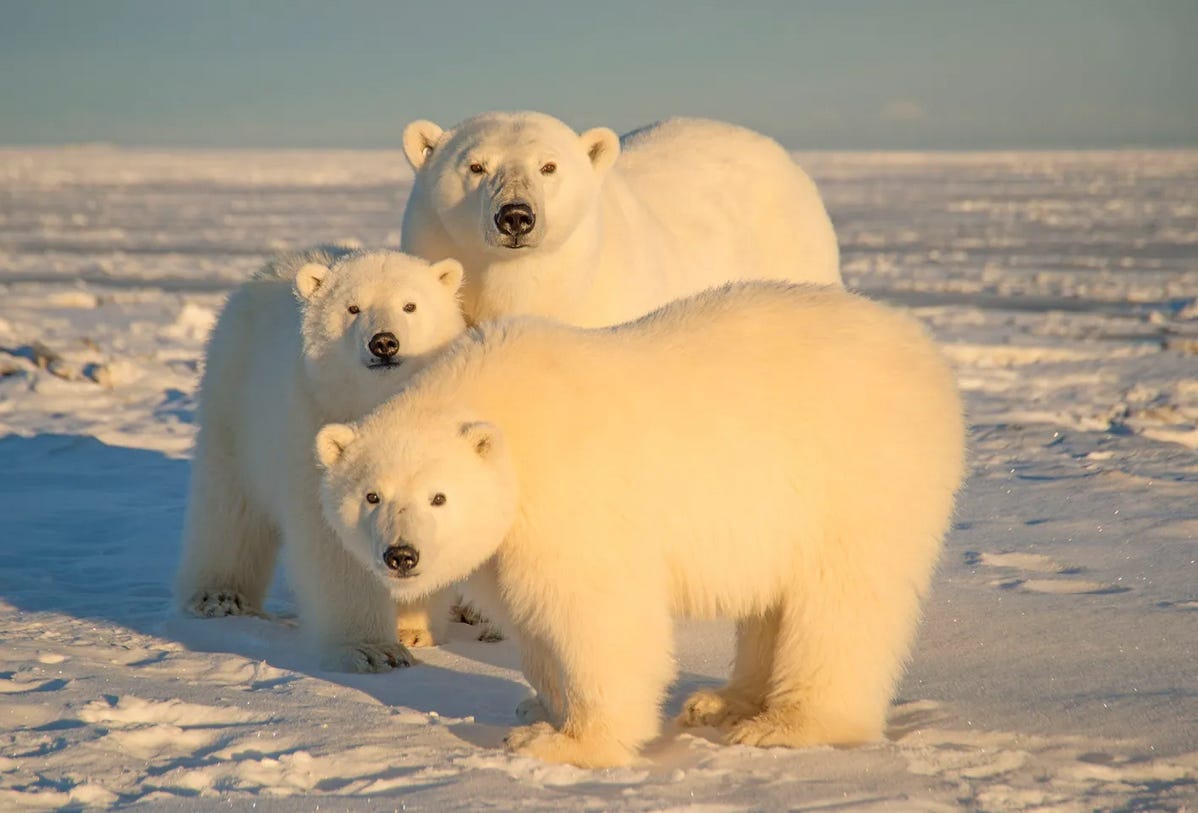Winter Storm; Antarctic Ice
In Oregon, (and maybe elsewhere) I Believe it's the Worst in 40 Years
4’ of snow in Iowa!
In my state of Oregon, where temps in Portland are projected to be down to 12-14 deg F tomorrow, along with up to 6” of snow. Mt Hood finally got a few feet of snow in the past week so the ski resorts could open.
Of course Oregon isn’t the only area affected. As reported by “1440 Daily Digest” today:
“A winter storm is sweeping across the country today and is poised to become a bomb cyclone, bringing blizzard conditions and flooding across much of the country's eastern half. The storm will be followed by a blast of arctic cold air, with as much as 88% of the contiguous US expected to experience temperatures dropping below freezing by Monday.
Dubbed Winter Storm Gerri, it comes days after a separate winter storm hit the central US and parts of the Plains (Why so many?). Gerri is forecast to make its way from the Four Corners region toward the central and eastern US, with 1-2 feet of snow projected in portions of Michigan, Wisconsin, and Illinois. Meteorologists say temperatures in Wyoming and Montana could reach between 20 and 30 degrees below zero and potentially below 50 degrees in the Northern Plains. The Southern Plains and Midwest could see temperatures dip into the minus 20s, while the South could see temperatures in the 20s.
The cold air pattern is projected to stay until at least the week of Jan. 22; see detailed forecasts for regions across the US here (w/clickable map).”
How’s the weather in your area?
polar sea ice
Coincidentally, and timely, yesterday I came across an article about polar sea ice NOT disappearing like the climate doomsayers have been saying for years. The polar bears in the Arctic are doing fine, too. (see below)
From eos.org/science “Sea ice covers the ocean surrounding Antarctica, forming a key component of the coupled ocean-atmosphere-cryosphere system in southern high latitudes that helps regulate climate, ocean circulation, and marine ecosystems. The extent of Antarctic sea ice varies greatly from year to year, but 40 years of satellite records show a long-term trend. Although some Antarctic regions have experienced reductions in sea ice extent, the overall trend since 1979 shows increased ice.”
The article went on to say that Arctic sea ice in the North had been declining, but here’s an indication that the decline may be coming to a halt. I suspect that sea ice, like global temp, is cyclical.
From nsidc.org Arctic Sea Ice News:
“For December overall, 2023 had the third highest monthly gain in the 45-year record at 2.71 million square kilometers (1.05 square miles)”
Here’s another article by Tuco’s Child Jan 11, on arctic sea ice not shrinking:
“The media propagates climate change crisis misinformation produced by corrupted academics publishing bogus climate models, aided and abetted by clueless and misguided government funding agencies that are fueled by the massive gush of taxpayer cash from the Biden Administration. ..As a scientist (chemistry, 30 years combined in industry and academia) I opine that short- and long-term climate change(s) are part of normal planetary Earth cycles, and that man has not created disastrous increases of CO2 which have lead to global warming.”
Tuco’s Child goes on to quote Allan Astrup Jensen, described as “a distinguished scientist of long standing with over 300 publications to his name. He is the Research Director of the Nordic Institute of Product Sustainability, Environmental Chemistry and Toxicology, and sits on the editorial board of the Springer publication, Environmental Science and Pollution Research.”
Jensen says “there is no indication that we should expect the Arctic summer sea ice to disappear, as predicted, in one or two decades”
polar bears
they sure look nice and healthy, don’t they
After explaining that polar bears were given international protection in the early 1970s, polarbearscience.com writes, in refutation of the so-called ‘factcheckers’, “But the notion that there has been no recovery of population sizes since then is simply not plausible. As I mentioned in Chapter 2, it was clear as early as the late 1980s that numbers had rebounded substantially due to conservation efforts. Most studied populations had doubled in size (Amstrup et al. 1986; Andersen and Aars 2016; Larsen 1986; Stirling et al. 1977b).” (emphasis mine)








We are expecting temps as low as 8 degrees next week (northeastern Alabama).
And - your caption on the polar bears - I had the same thought!! I’m so used to the media showing us starving ones that I didn’t know there were any healthy-looking ones left!